Feature Publications
Korean Culture Series
The Korea Foundation has published informational books about various aspectsof Korean culture in English to provide an in-depth explanation to general readers.
-
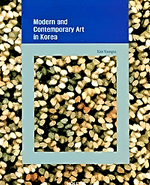 Korean Culture Series Ⅰ : Modern and Contemporary Art in Korea
Korean Culture Series Ⅰ : Modern and Contemporary Art in Korea
- Written by Kim Youngna
- 2005 / 121 page / 190x240(mm)
- ISBN: 978-1-56591-215-2(H)
- ISBN: 978-1-56591-217-9(S)
This book discusses the issues of tradition, modernity, and identityof modern andcontemporary art in Korea. Major aspects of the book include Korea’s modernismduring the Japanesecolonial period, the spread of modernism after the Korean War and art informel,the monochrome artmovement, the so-called minjung (people’s) art, revival of ink paintings, andKorean artists overseas,as well as the art of North Korea. It strives to introduce Korean art not onlyto art lovers orspecialists, but to those with a general interest as well.
-
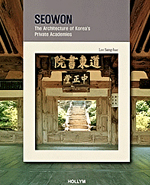 Korean culture Series Ⅱ : The Architecture of Korea`s PrivateAcademies
Korean culture Series Ⅱ : The Architecture of Korea`s PrivateAcademies
- Written by Lee Sang-hae
- 2006 / 208 page / 190x240(mm)
- ISBN: 978-1-56591-218-7(H)
- ISBN: 978-1-56591-219-5(S)
This book provides a comprehensive introduction to the privateinstitutions, which werededicated to higher learning that eventually emerged at the forefront ofNeo-Confucianism in Korea. Itexamines in detail the various roles that these unique institutions playedduring the Joseon Dynasty(1392-1910), while also paying much attention to their noteworthy architecture.
-
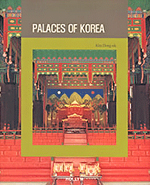 Korean Culture Series Ⅲ : Palaces of Korea
Korean Culture Series Ⅲ : Palaces of Korea
- Written by Kim Dong-uk
- 2006 / 144 page / 190x240(mm)
- ISBN: 89-86090-23
This book introduces the historical background and uniquearchitectural styles of Korea’spalaces, which can be differentiated from the influences of East Asian palacearchitecture. The bookoffers deions of East Asian capitals and palaces, a brief history ofpalaces in Korea, theeveryday life and ceremonies of palaces, Korean palace architecture, andnoteworthy palaces in Korea.
-
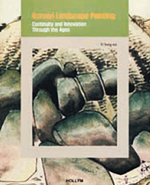 "Korean Culture Series Ⅳ : Korean Landscape Painting
"Korean Culture Series Ⅳ : Korean Landscape Painting
- Written by Yi Song-mi
- 2006 / 224page / 190x240(mm)
- ISBN: 978-1-56591-230-6(H)
- ISBN: 978-1-56591-231-4(S)
The narrative and illustrations of this book are generally presentedby historical period,including“ The Three Kingdoms and the Unified Silla Periods,” “The Goryeo andEarly Joseon Periods,”“The Mid-Joseon Period,” “The Late Joseon Period,”and “The Late Nineteenth tothe Early TwentiethCentury.” Through an abundance of color illustrations and detailed accounts,readers can appreciate theelegant beauty of Korean landscape paintings and understand their historicalbackground.
-
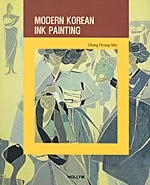 Korean Culture Series Ⅴ : Modern Korean Ink Painting
Korean Culture Series Ⅴ : Modern Korean Ink Painting
- Written by Chung Hyung-min
- 2006 / 160pages / 190x240mm
- ISBN: 978-1-56591-237-3(H) / 978-1-56591-238-1(S)
This book seeks to define how the term “modern” should be applied toKorean art, whileexploring its evolution over roughly a hundred years, from the opening ofKorea’s ports to outside tradein 1876 through the 1980s. The purpose of this book, with its detailedexplanations and related images,is to further understanding of how Korean art and the times it represented areclosely related.
-
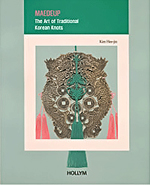 Korean Culture Series Ⅵ : Maedeup: The Art of Traditional KoreanKnots
Korean Culture Series Ⅵ : Maedeup: The Art of Traditional KoreanKnots
- Written by Kim Hee-Jin
- 2006 / 160 pages / 190x240mm
- ISBN: 978-1-56591-232-2(H) / ISBN: 978-1-56591-233-0(S)
Maedeup is a language of the hands, a flower of the heart. It waslike a kind of wings forKorean culture, leading the Korean spirit into flight, like the wings of thebats adorning a Joseonnobleman’s coat, and the wings of butterflies and phoenixes that decorate silverdaggers. This bookintroduces the history of maedeup, its uses, and the making of maedeup, throughdetailed explanation andillustrations.
-
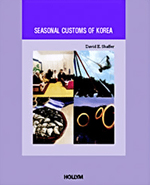 Korean Culture Series Ⅶ : Seasonal Customs of Korea
Korean Culture Series Ⅶ : Seasonal Customs of Korea
- Written by David E. Shaffer
- 2007 / 208pages / 190x240mm
- ISBN: 978-1-56591-245-8
The seasonal customs of Korea are the folk traditions of everydaylife that have beenrepeated annually throughout the ages. As such, the residents of a particularcommunity came to share auniformity of everyday customs by living within the same natural environment andcultural setting. Inthis regard, seasonal customs are closely related to the rhythms of everydaylife, and as the samecustoms are repeated at the same time every year, they accumulate and shape thecommon patterns in thepeople’s daily lives.
-
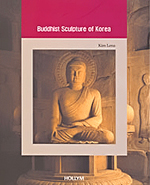 Korean Culture Series Ⅷ : Buddhist Sculpture of Korea
Korean Culture Series Ⅷ : Buddhist Sculpture of Korea
- Written by Kim Lena
- 2007 / 223 pages / 190x240mm
- ISBN: 978-1-56591-243-4
This book provides a comprehensive overview of the Buddhistsculpture of Korea, from theThree Kingdoms Period through the Joseon Dynasty. Especially, the authorprovides in-depth deionsof Buddhist sculpture from the Joseon era and demonstrates how Buddhist artremained alive and well inthe everyday life of the common people.
-
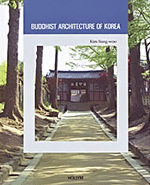 Korean Culture Series Ⅸ : Buddhist Architecture of Korea
Korean Culture Series Ⅸ : Buddhist Architecture of Korea
- Written by Kim Sung-woo
- 2007 / 152 pages / 190x240mm
- ISBN: 978-1-56591-226-7
This book focuses on the role that architecture played in Korea’sBuddhist culture. Whilelife at Buddhist temples and the austere practices of Buddhism can be a matterof spiritual complexityand religious consciousness, this book seeks to explain the physicalcharacteristics of Buddhist-relatedarchitecture.
-
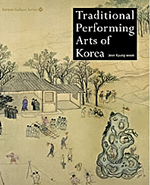 Korean Culture Series Ⅹ : Traditional Performing Arts of Korea
Korean Culture Series Ⅹ : Traditional Performing Arts of Korea
- Written by Jeon Kyung-wook
- 2008 / 160 pages / 190x240mm
- ISBN: 978-89-86090-26-0
This book provides a comprehensive overview of the historicalbackground, genres, andperformers of the traditional performing arts of Korea, such as puppet plays,mask dramas, and Pansori,a uniquely Korean form of narrative song, which originated from the singing anddancing traditions ofthe ancient Korean people. It offers a detailed introduction to a variety ofKorea’s traditionalperforming arts.
-
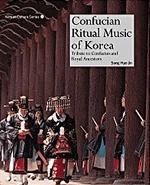 Korean Culture Series XI : Confucian Ritual Music of Korea
Korean Culture Series XI : Confucian Ritual Music of Korea
- Written by Song Hye-jin
- 2008 / 180 pages / 190x240mm
- ISBN: 978-89-86090-28-4
This book describes in detail the history of “he Rite to RoyalAncestors” the generalbackground of Confucian sacrificial music and dance, and the musicalcharacteristics of two types ofsacrificial music transmitted in Korea. To help readers understand theprocedures and the content of theceremony and music, illustrations and a music CD are included.
-
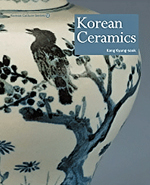 Korean Culture Series XII : Korean Ceramics
Korean Culture Series XII : Korean Ceramics
- Written by Kang Kyung-sook
- 2008 / 232 pages / 190x240mm
- ISBN: 978-89-86090-30-7
Korean pottery may not be ornate, nor is it imposing in size, but itis distinguished by itsinfinite embrace of nature. Through a continued mutual exchange with China,Korea developed a ceramicsstyle that captured the Korean spirit. The uniqueness of Korean ceramics stemsfrom the austere humilityof the earthenware, the jade-green color of Goryeo celadon, the wit of Joseonbuncheong ware and therefined beauty of Joseon white porcelain.
-
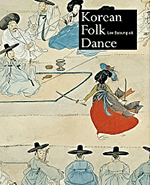 Korean Culture Series XIII : Korean Folk Dance
Korean Culture Series XIII : Korean Folk Dance
- Written by Lee Byoung-ok
- 2008 / 160 pages / 190x240mm
- ISBN: 978-89-86090-31-4
This is the first volume fully theorizing the Korean folk dancetradition. Folk dances fromvarious regions are introduced and their characteristics are discussed. Koreandance reflects an accordbetween labor and art which connects work, shaman rites, amusements, and dramainto one comprehensiveart. This book also provides the underlying spirit of Korean folk dance and itsprofound spiritualbackground.
-
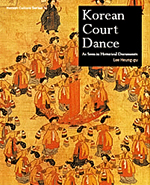 Korean Culture Series XIV : Korea Court Dance
Korean Culture Series XIV : Korea Court Dance
- Written by Lee Heung-gu
- 2010 / 140 pages / 190 x 240mm
- ISBN: 978-89-86090-37-6
This book provides deions, according to period and type, ofthe court dance performedat festive events of the Royal Court, from the Three Kingdoms period up throughthe Joseon Dynasty era.There is a particular emphasis on the court dance of the Joseon period based ona study of historicaldocuments, including “Musical Canon of Joseon” (Akhak Gwebeom), a monograph onmusic from the “Historyof Goryeo” (Goryeosa Akji), and numerous royal protocols













